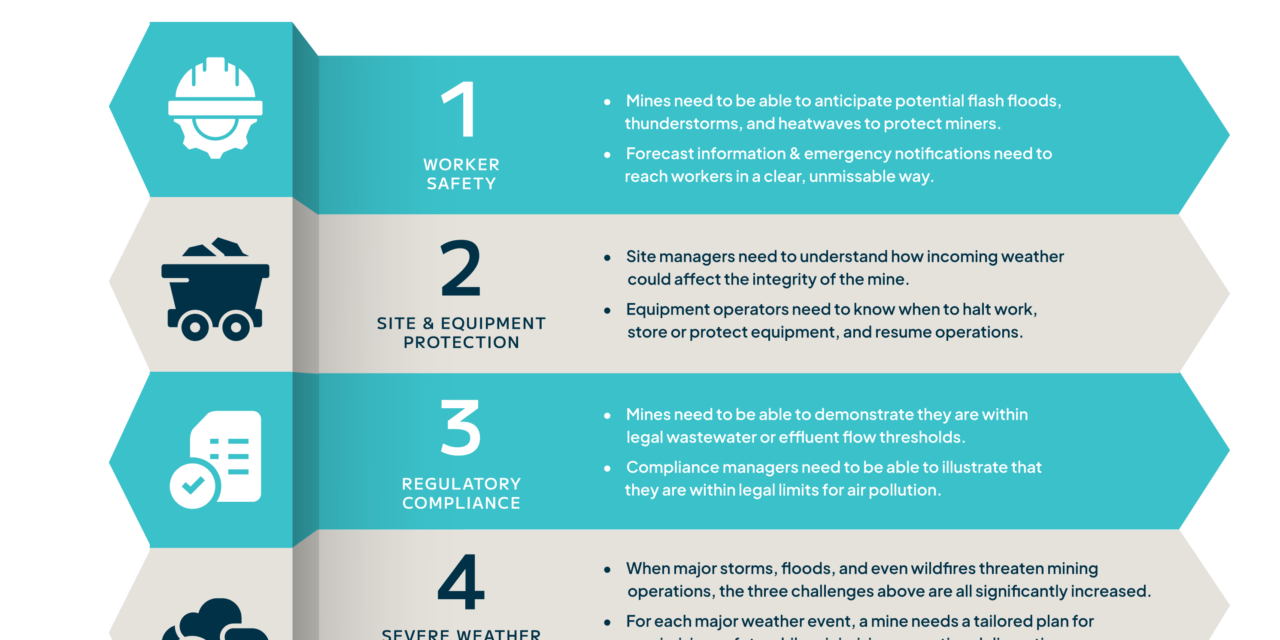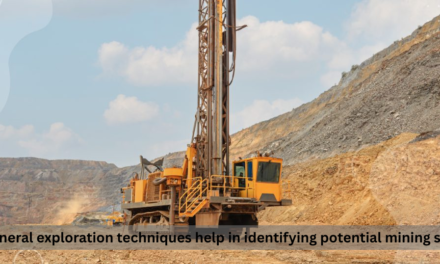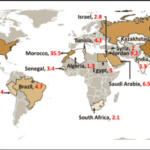The mining industry faces several challenges today, ranging from economic pressures to environmental concerns, and from technological advancements to social and regulatory hurdles. These challenges impact both the profitability and sustainability of mining operations. Here are the main challenges faced by the industry:
1. Environmental and Sustainability Concerns
- Environmental Degradation: Mining can have significant negative impacts on ecosystems, including deforestation, loss of biodiversity, soil erosion, and water contamination (e.g., acid mine drainage, heavy metal contamination). The destruction of habitats, especially in sensitive regions, remains a major concern.
- Water Usage and Pollution: Mining, especially in minerals like gold and coal, often requires vast amounts of water. This leads to water scarcity in regions where water is already limited. In addition, polluted water from mining operations can contaminate surrounding ecosystems, harming wildlife and communities.
- Greenhouse Gas Emissions: Mining operations, particularly those that rely on fossil fuels for energy and transportation, contribute to carbon emissions. As global pressure mounts to reduce emissions, mining companies are facing increasing scrutiny over their environmental footprint.
- Waste Management: Mining generates large volumes of waste, such as tailings, waste rock, and slag. Improper disposal or storage of these materials can lead to catastrophic environmental accidents, as seen in tailings dam failures.
2. Social and Community Issues
- Community Opposition: Mining projects, especially large-scale ones, often face opposition from local communities due to concerns over environmental damage, displacement, or impacts on local livelihoods. This has led to conflicts between mining companies, indigenous groups, and other local stakeholders.
- Indigenous Rights and Land Disputes: Mining operations can infringe on the rights of indigenous populations and local communities, especially if proper consultations and land rights are not respected. This has led to protests, legal battles, and, in some cases, halted projects.
- Health and Safety of Workers: Mining is an inherently dangerous industry. Workers are exposed to risks such as mine collapses, dust inhalation (leading to diseases like pneumoconiosis or “black lung”), and toxic substances like cyanide or mercury in gold mining. Ensuring the health and safety of workers is a constant challenge.
3. Economic Pressures
- Fluctuating Commodity Prices: Mining companies are highly sensitive to changes in global commodity prices (e.g., gold, copper, coal, etc.). A drop in prices can significantly reduce profitability, leading to downsizing, project delays, or even mine closures. Conversely, a sharp rise in prices can cause boom-and-bust cycles, creating economic instability.
- Cost Inflation: The mining industry is grappling with rising costs for labor, energy, equipment, and materials. This inflationary pressure reduces profit margins, especially when commodity prices are not increasing correspondingly.
- Financing and Investment Challenges: Securing capital for new projects or expansions is becoming more difficult, especially with increasing environmental and regulatory concerns. Investors are more cautious, and funding may be more restricted for companies not meeting sustainability or governance standards.
4. Technological Challenges
- Integration of New Technologies: While technologies such as automation, artificial intelligence, and robotics hold great promise, implementing new technologies can be capital-intensive and complex. Legacy systems and infrastructures may not be compatible with modern innovations, leading to challenges in integrating and scaling technologies effectively.
- Cybersecurity Risks: As the mining industry adopts more connected and automated systems, it becomes more vulnerable to cyberattacks. Critical infrastructure, such as autonomous trucks, data storage, and control systems, can be targeted by malicious actors, potentially leading to operational disruptions or safety incidents.
- Data Management: Mining companies are generating vast amounts of data, from geological surveys to operational metrics. Effectively managing, analyzing, and utilizing this data is challenging, especially when it comes to optimizing operations and improving decision-making.
5. Regulatory and Compliance Issues
- Stricter Environmental Regulations: Governments worldwide are enacting stricter environmental regulations, such as carbon emission limits, water usage restrictions, and waste management protocols. Adapting to these regulations can increase operational costs, require significant investment in compliance measures, and slow down the permitting process for new projects.
- Health and Safety Regulations: Mining companies must comply with stringent safety regulations, but maintaining safety in hazardous environments remains a significant challenge. Regulatory bodies are increasing demands for workplace safety, and any violations can result in hefty fines or legal consequences.
- Political Risk and Policy Uncertainty: The mining industry is often subject to political instability and policy changes that can affect the viability of operations. This includes changes in taxation, nationalization of resources, or restrictions on foreign investment, particularly in resource-rich developing countries.
6. Resource Depletion and Exploration
- Depletion of High-Quality Ore: As high-grade mineral deposits become depleted, mining companies are increasingly extracting lower-grade ores, which requires more energy and resources to process. This raises operational costs and reduces overall profitability.
- Exploration Challenges: Finding new mineral deposits is becoming increasingly difficult, especially in established mining regions. New exploration areas may be in remote or politically unstable regions, making exploration more expensive and risky.
- Sustainability of Resources: Long-term sustainability of resources is a key issue, as demand for minerals like lithium, cobalt, and rare earth elements continues to rise due to electric vehicle production and technological advancements. This increases pressure to find and develop new sources of these critical minerals.
7. Workforce Challenges
- Skill Shortages: There is a growing skills gap in the mining industry, particularly in specialized fields like automation, data science, and geotechnical engineering. The mining workforce is aging, and attracting younger workers with the required technical skills is difficult.
- Labor Strikes and Disputes: Mining companies often face strikes and labor disputes, especially in regions where labor unions are strong. These disputes can disrupt operations and affect profitability. In some cases, workers demand better wages, safer conditions, or improved benefits.
8. Global Supply Chain Issues
- Supply Chain Disruptions: The mining industry is deeply integrated into the global supply chain. Disruptions caused by events like the COVID-19 pandemic, political instability, trade restrictions, or transportation bottlenecks can affect the availability and cost of critical materials (such as steel, cement, and machinery).
- Transport and Infrastructure Challenges: Many mining operations are located in remote areas, and getting materials to market can be challenging. Poor infrastructure, inadequate roads, or a lack of efficient transportation networks can increase operational costs and lead to delays in project timelines.
9. Public Perception and Corporate Social Responsibility (CSR)
- Negative Public Perception: Mining companies often face criticism for their environmental impact, particularly in relation to deforestation, pollution, and resource exploitation. Public perception can influence investor sentiment and lead to calls for greater transparency and accountability.
- Corporate Social Responsibility (CSR): There is increasing pressure on mining companies to implement responsible and sustainable practices. This includes investing in local communities, reducing environmental harm, and promoting ethical sourcing of minerals. Failing to meet these expectations can lead to reputational damage, legal consequences, and community unrest.
10. Climate Change
- Extreme Weather Events: Climate change is leading to more extreme weather events, such as floods, droughts, and wildfires. These can disrupt mining operations, damage infrastructure, and make it more difficult to manage water resources.
- Transition to Green Energy: As global demand shifts toward clean energy and electric vehicles, mining companies are under pressure to provide critical minerals (such as lithium, cobalt, and copper) needed for renewable technologies. The mining industry is being tasked with balancing the extraction of these resources with environmental and social concerns.
Conclusion
The mining industry faces a complex array of challenges, from environmental sustainability and economic pressures to technological integration and social responsibility. To navigate these challenges, mining companies need to focus on innovation, safety, efficiency, and collaboration with governments, communities, and environmental organizations. Embracing green technologies, improving workforce skills, and enhancing transparency will be critical for ensuring the long-term viability of the industry while minimizing its impact on the planet and society.














